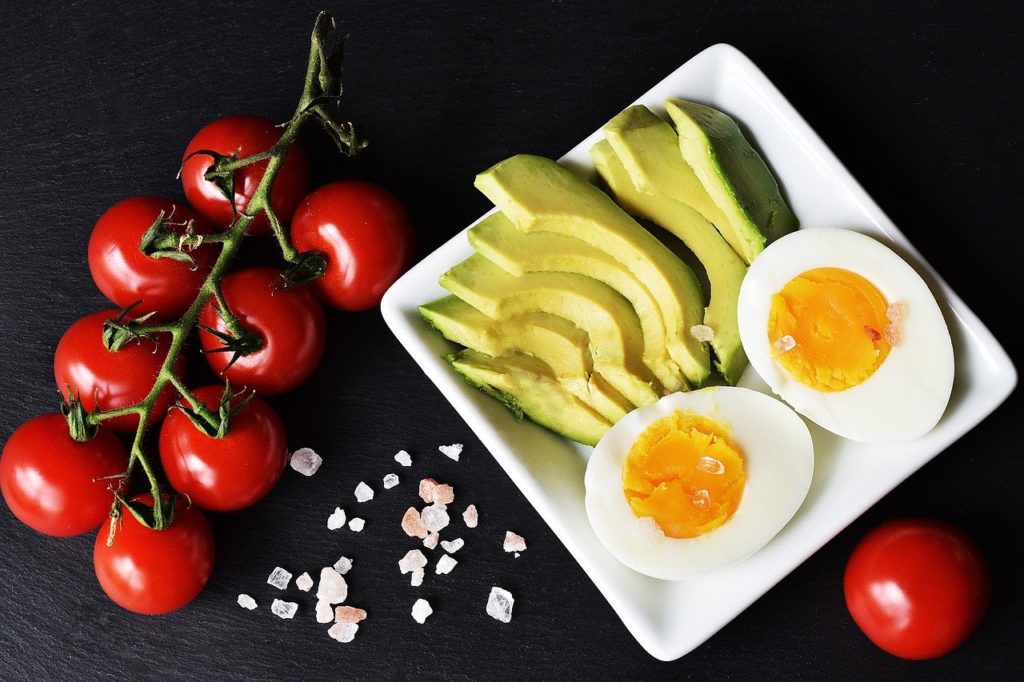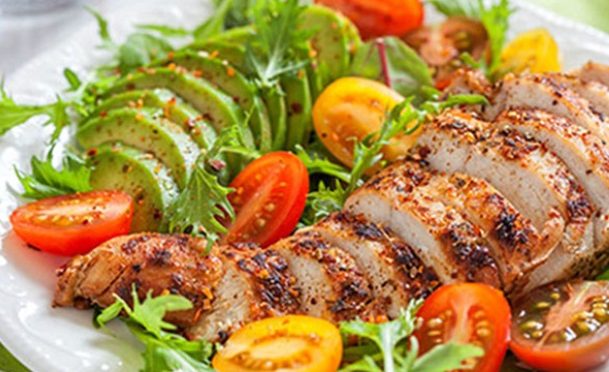The keto beginner meal plan is a dietary plan that focuses on eating high-fat, low-carbohydrate foods to promote the body’s production of ketones. These ketones are produced when the body breaks down fat for energy instead of glucose from carbohydrate foods.
The keto diet has become popular in recent years to lose weight and improve health, and many people are interested in starting a keto diet plan.
This article will provide a detailed guide on starting a keto beginner meal plan, including what to eat and avoid. We’ll also discuss who should and should not follow a keto diet and offer some thoughts on how keto may benefit you.
What is a Keto Beginner Meal Plan?
A beginner meal plan is a three-day initial “keto kickstart” diet. The purpose of the keto kickstart is to get your body used to using fat as fuel, so this should be followed at least until you’ve started feeling comfortable in the transition from burning glucose for energy to instead burning fatty acids and ketones.
This could take anywhere from 1-3 weeks, depending upon how many carbohydrates you ate before going ketogenic and just how high those carbohydrates were.
For example, if you were eating a reasonably standard American diet at say 55% carbohydrate and 15% protein, your body would be used to using glucose as its primary energy source. However, reducing carbohydrate intake abruptly to 5-10% of daily caloric intake can take time for the body to adapt.
When Did it Start?
The keto diet was initially developed in the 1920s to treat epilepsy. It has been found to be effective in reducing seizures in children and adults, and more recent research suggests that it may also have benefits for other health conditions such as diabetes, heart disease, and Alzheimer’s disease.

What are the Main Elements of the Keto Diet
The keto diet is a special type of low-carbohydrate diet that is used by people with epilepsy. It aims to control seizures by forcing the body to burn fat rather than carbohydrates as the main fuel.
The typical keto diet consists of about 70% fat, 20% protein, and 10% carbohydrate. It is usually sustained for about three months and then maintained for life.
The keto diet is low in carbs and moderate in protein. It has lots of fat and a little bit of protein.
The name comes from ketosis, a metabolic state where the body breaks down fat for fuel instead of carbohydrates. Ketosis can occur when you have too much fat, which happens when you eat a lot of fatty foods like sweet potatoes, butter, and cream. But it can also occur because the liver is making more ketones than normal due to a lack of carbs.
Ketosis is dangerous if you don’t eat enough carbs. It can be dangerous even if you do eat enough carbs, especially if you are not high-fat adapted yet (HCF). In HCF your body can burn both fat and carbs for fuel; the difference between them is the amount of oxygen they take up by themselves. If you eat too many carbs, your body will break down those extra carbs into sugar or fat; that’s when sugar and fats get stored as fat rather than burned off as fuel — as they should be.
High-fat adaptation is not a quick thing: it takes several months to burn most of those extra calories, but the fastest way to do it is to go on a high-fat diet with lots of healthy fats like olive oil
How and Why it Works?
The ketogenic diet works by inducing the body to produce ketones, created when the body breaks down fat for energy instead of glucose. This is a normal body response for when food intake is low. It allows the body to break down fatty acids and then use them to produce energy.
In contrast, if you eat more carbohydrates than your body needs or has stored as glycogen, those carbs will be converted into fat and stored in the liver and muscles of your body.
To induce ketosis, insulin levels have to be low enough that the hormone glucagon can activate fats stores (that’s where things like butter come in) to release their energy into the bloodstream.
So this means that lower carbohydrate consumption equals less insulin released by the pancreas, which means that there is less chance of storing excess energy as glucose (fat). Remember that glucose (blood sugar) is the body’s primary energy source and preferred fuel for the brain.
There are a few different ways to follow a ketogenic diet, but they involve reducing carbohydrate intake and moderating protein intake. The most common way to follow a keto diet is by eating around 20-50 grams of carbohydrates per day, equivalent to a half cup of cooked rice or one apple.
Depending on your goals and preferences, you can also eat more or less.
Basics of the Keto Diet
To follow a ketogenic diet, you’ll need to consider the following:
You should always include at least one portion of unprocessed, fatty meat or fish when you plan your meals. The diet consists of plenty of protein (usually around 60% of calories) and some high-fat dairy like cheese. But it’s vital to limit carbs during every meal – including breakfast!
- You can’t drink milk or eat fruit with cereal.
- You can’t use flour in oatmeal.
- No fruit juice with your lunchtime sandwich.
This may seem difficult at first, but you’ll quickly adapt. Many keto recipes incorporate tasty drinks like smoothies, coffee drinks, sweet tea, lemonade, etc. If you’d like to include carbs into your meal plans, only do so in the evening after you’ve reached your daily caloric limit.
The ketogenic diet is all about keeping your body in a state of ketosis when your body uses fat for energy instead of carbs. This can be achieved by restricting your carbohydrate and sugar intake to less than 50 grams per day.
To put this into perspective, one apple has about 25 grams of carbohydrates! So you’ll need to be very careful about what you eat if you’re following a ketogenic diet.

Keto Meal Plan
Now that you understand the keto diet basics, let’s look at how you can successfully follow this eating method.
Breakfast: On a ketogenic diet, you’ll need to keep your morning meals low in carbohydrates and high in fat. Some great breakfast options include:
- Scrambled eggs with cream cheese and pink Himalayan salt.
- A keto mug muffin (made with almond or coconut flour).
- Keto smoothies made with keto-approved protein powders (hemp, pea, whey, etc.) and unsweetened full-fat milk like almond/coconut milk.
Breakfast items should be kept under 10 grams of carbs per serving.
Lunch/Dinner: Lunch and dinner time are very flexible for the keto lifestyle because there are so many delicious low-carb food choices!
Great lunch ideas include:
- A burger wrapped in lettuce instead of a bun.
- A salad with grilled chicken or salmon and lots of healthy fats like olive oil and avocado.
- Roasted vegetables like broccoli, cauliflower, and Brussels sprouts.
For dinner, you might want to try:
- Salmon baked in parchment paper with herbs.
- Bacon-wrapped asparagus spears.
- Keto pizza (made with a low-carb crust).
As you can see, there are endless possibilities for keto-friendly meals! Just make sure that your total daily carb intake does not exceed 50 grams.
Snacks: When you’re following a ketogenic diet, it’s essential to have healthy snacks on hand so that you wouldn’t get tempted to cheat. Some great keto-approved snacks include:
- String cheese.
- Nuts like almonds or pecans.
- Pork rinds.
- Dark chocolate (70% or higher cocoa).
Again, it’s essential to keep your carb intake low when snacking, so stick to items that have 10 grams of carbs or less per serving.
Now that you understand the ketogenic diet basics, it’s time to create your own personal meal plan! The best way to do this is to consider your likes and dislikes and make sure that you include plenty of high-quality foods that will provide all the nutrients your body needs.

Five Different Types of Keto Plans
There are five types of keto plans: Standard, Cyclical, Targeted, High-protein, and Vegan/Vegetarian. Here is a brief overview of each:
Standard or Regular Keto Diet: This is the most typical keto diet. It involves 3-4 meals per day, where about 30% of the calories come from protein, 15% from carbs, and 55% from fat. You are meant to keep carbohydrates under 20 grams per day on this plan. Protein should be moderate on this plan.
Cyclical or Targeted Keto Diet: This plan allows for 3-5 days of regular ketogenic dieting followed by 1-2 days of high carbohydrate consumption (150g+). This is followed by another 4-5 days of regular ketogenic dieting before repeating the cycle.
High Protein Ketogenic Diet: This diet focuses on keeping protein intake reasonably high (around 40% of daily caloric intake) while still keeping carbohydrates and fat at moderate levels. This can be helpful for people who want to maintain muscle mass or for athletes who need more protein for energy.
Vegetarian/Vegan Keto Diet: This keto diet is perfect for eating meat or animal products. It involves eating plenty of healthy fats, such as nuts, seeds, avocado, and olive oil, along with plenty of leafy greens and other plant-based proteins.
Targeted Keto Diet: This plan focuses on eating a higher percentage of carbohydrates around workouts, typically 20-25 grams per meal. The idea behind this type of dieting is that the extra carbohydrates around workouts will enhance physical performance.
Who Should Eat Keto?
People who would benefit from eating a keto diet plan are those looking to lose weight, get leaner, enhance their cognitive function, or athletes performing at high-intensity exercise levels.
The benefits of having adequate blood sugar and insulin levels while reducing oxidative stress on body tissues are also helpful for people with chronic fatigue syndrome, inflammatory diseases like rheumatoid arthritis, multiple sclerosis, cancer, Alzheimer’s disease, Parkinson’s disease, and diabetes.
These people may perform better when in ketosis due to the neurological benefits of healthy blood sugar control. One key area where keto can improve health is managing type 2 diabetes which has reached epidemic levels late.
The ketogenic diet may also benefit people with epilepsy. A recent survey suggested that nearly half of parents who care for children with epilepsy use the diet as a form of treatment (47%).
However, experts are concerned about these largely unconfirmed benefits since there is very little research into the long-term effects of their potential impact on bone health and growth rates.
Other known possible issues include acidosis, high cholesterol levels, constipation, diarrhea, lethargy (tiredness), nausea/vomiting caused by excess protein consumption or caloric restriction.
Who Should Not Eat Keto?
Unfortunately, a keto beginner meal plan can cause adverse effects that outweigh any potential benefits for some. People who should not eat a ketogenic diet are those with liver or kidney disease, pregnant or breastfeeding, those with pancreatitis, people on medications for diabetes or high blood pressure, and those with a history of gastric ulcers.
Additionally, their parents should closely monitor children on the keto diet as they may not get enough essential nutrients like vitamins and minerals.
Who Should Go On a Keto Diet
The Keto diet is extremely low-carb, but not strictly ketogenic. The doctor who popularized it, Dean Ornish, has said that he will not recommend a strict keto beginner meal plan to anyone who has had bypass surgery and is doing well on a low-fat vegan diet.
If you are recovering from bypass surgery, or you are sick or have diabetes, or have high cholesterol or any other medical condition that makes you vulnerable to the effects of sugar in your blood and insulin resistance, the Keto diet is not for you.
Keto is a diet based on ketones, a byproduct of burning fat. This sounds like a good idea because fat is fattening, and it seems obvious that if you were fat you could eat less fat and be thin. That makes it sound easy.
But as we all know, “simple” does not mean “easy.” To get the benefits of the diet you have to do more than cut out the fattening stuff. You have to lower your carbs, which means giving up bread, pasta, potatoes, rice, fruit, and even starchy vegetables like squash and beans. The main reason foods like corn or beans are considered “carbs” is that they have a lot of starch in them. Low-carb diets are often called low-starch diets.
Conclusion
In summary, a ketogenic diet is an excellent way for many people to improve their health. It can help you lose weight, get leaner, enhance your cognitive function, and increase your energy levels.
However, it is not ideal for everyone and may not be appropriate for all medical conditions. Please consult with your doctor before starting any new diet plan to ensure it is right for you.
All articles and information contained in the Health Wealth Lifestyle are for informational purposes only.
